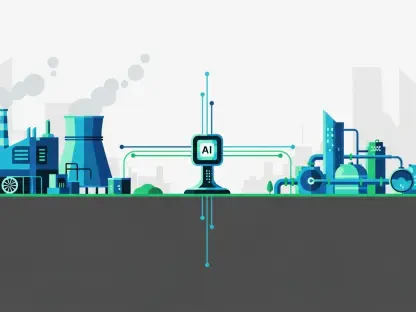Tax credits play a crucial role in driving the growth of the solar energy sector in the United States. These incentives not only promote the adoption of renewable energy but also stimulate domestic manufacturing and job creation. This article delves into the multifaceted benefits of tax credits for the U.S. solar industry and the challenges that need to be addressed for sustainable progress.
Strengthening Domestic Manufacturing
Encouraging Local Production
Federal tax credits serve as a powerful tool in incentivizing companies to produce solar components like panels and inverters within the United States. This shift fundamentally transforms the U.S. solar industry, which has historically relied heavily on imports from countries with established manufacturing hubs. By reducing dependence on overseas suppliers, these credits help stabilize supply chains that are frequently vulnerable to global disruptions such as geopolitical tensions, trade policy changes, and natural disasters. This move towards local production ensures that the U.S. solar sector can continue to grow without being hampered by issues beyond its control.
Importing solar components has long been the norm due to cost advantages, yet this reliance has exposed the industry to significant risks. For example, the COVID-19 pandemic and recent international trade tensions have highlighted vulnerabilities in sourcing critical components from abroad, leading to delays and price volatility. By encouraging local production, federal tax credits not only work to shield the industry from these disruptions but also promote the development of an integrated domestic supply chain. This local ecosystem fosters innovation, improves quality standards, and builds a foundation for sustainable growth in renewable energy.
Boosting Local Economies
In addition to strengthening supply chains, promoting domestic manufacturing through tax credits significantly contributes to local economic growth. When companies establish or expand their operations in the U.S., they create a multitude of high-quality jobs that provide stable employment opportunities for local residents. These jobs are not confined just to the manufacturing sector but extend to various ancillary services, including transportation, logistics, and equipment maintenance, thus having a wider ripple effect on the local economy. Communities that were previously struggling economically can benefit immensely from this surge in job opportunities.
Furthermore, the economic benefits of enhancing local manufacturing are manifold. For instance, the influx of high-quality jobs results in increased spending power for residents, which in turn boosts local businesses and service providers. Tax revenues generated from these businesses can be reinvested into community infrastructure, education, and public services, creating a positive feedback loop that fosters economic resilience. As local economies become more robust, they become well-equipped to handle fiscal challenges, ensuring a more equitable distribution of wealth and access to opportunities.
Economic and Job Growth
Creating Employment Opportunities
The investment in domestically produced solar equipment translates directly into significant job creation across various facets of the solar industry. Manufacturing jobs are an obvious direct benefit, but the ripple effect spreads far and wide, encompassing roles in installation, maintenance, project management, and sales. This broad employment spectrum means that the solar industry can cater to a diverse workforce with varying skill sets, from engineers and factory workers to planners and electricians. This inclusivity not only boosts employment numbers but also helps in building a skilled workforce that sustains the growth of the renewable energy sector.
Moreover, the creation of jobs in the solar sector comes at a crucial time when the country is transitioning from fossil fuel-based energy sources to renewable ones. Jobs in the traditional energy sector are slowly diminishing, and the solar industry provides a viable alternative for those seeking new career paths. The skills required in the solar industry are highly transferable from the fossil fuel sector, facilitating smoother transitions for workers who are being displaced. Investing in workforce training programs and certifications supported by tax credits can further enhance this transition, ensuring industry growth aligns with job creation.
Supporting Local Communities
While job creation is vital, the broader economic benefits of tax credits also play a pivotal role in supporting local communities. By creating stable employment and fostering economic growth, these incentives help build a strong foundation for clean energy projects in various regions, particularly those in desperate need of economic revitalization. Often, these regions have been impacted severely by industrial decline or the closure of fossil fuel facilities, leading to high unemployment rates and economic distress. Solar industry investments, bolstered by tax credits, can act as a catalyst for revitalization efforts in these communities.
The establishment of solar manufacturing facilities and related enterprises brings about numerous advantages, such as improved infrastructure and increased business activities, which positively impact local economies. For instance, new businesses springing up to support solar manufacturers, from suppliers and vendors to service providers, can transform economically stagnant areas into thriving hubs of activity. In turn, this creates a sense of economic stability and community revitalization, laying the groundwork for sustained development. Thus, the broader economic impacts of tax credits extend beyond individual job creation to robust community support and development.
Enhancing Equitable Energy Access
Targeting Low-Income Communities
Specialized tax credits are designed to improve renewable energy access in underserved and low-income communities, which have historically faced numerous barriers such as high upfront costs and financing difficulties. These barriers have made it challenging for many to participate in the clean energy transition, despite the potential long-term savings and environmental benefits. Tax credits aimed at these communities help to mitigate these initial financial hurdles, making solar energy more affordable and accessible for all. For example, credits like the Low-Income Communities bonus credit specifically target economically challenged areas, making solar projects financially viable.
Additionally, making solar energy accessible to low-income communities also addresses broader issues of energy equity. These communities often spend a higher proportion of their income on energy bills and stand to gain the most from the cost savings associated with solar power. By providing tax credits that reduce upfront costs and enable financing, policymakers can ensure that the benefits of renewable energy are distributed more equitably across all socioeconomic strata. This move not only aligns with environmental goals but also with broader social justice initiatives that aim to reduce energy poverty and promote economic inclusivity.
Fostering Investment in Transitioning Regions
Another critical dimension of enhancing equitable energy access is fostering investment in regions facing economic transitions, particularly those that have historically relied on fossil fuels. The Energy Communities bonus credit is an example of a targeted approach that supports these areas during their economic transformation. As the energy landscape shifts towards renewables, these regions have an opportunity to pivot from declining fossil fuel industries to burgeoning solar industries, ensuring that their economic bases remain robust. This transition is vital for preventing economic decline and fostering long-term regional stability.
Encouraging investment in transitioning regions comes with multiple benefits. First, it prevents the economic stagnation that can follow the closure of fossil fuel plants, thereby protecting communities from sharp economic downturns. Second, it supports the infrastructural development necessary for a smooth transition to renewable energy sources. Investment in solar infrastructure, driven by tax credits, can kickstart new industry sectors that provide jobs and invigorate local economies. Therefore, policies like the Energy Communities bonus credit not only advance the clean energy agenda but also ensure that no community is left behind in this critical economic transition.
Navigating Policy and Political Challenges
Adapting to Evolving Policies
The renewable energy industry must adeptly navigate a complex landscape of federal guidelines tied to tax credits, staying compliant with evolving policies to maximize benefits. As policies and eligibility criteria evolve, companies often face challenges in planning long-term strategies and ensuring compliance with new regulations. This requires the development of dedicated frameworks and obtaining expert guidance to remain abreast of policy changes. Companies must foster robust internal structures to adapt quickly to these changes, avoiding potential setbacks that could arise from regulatory non-compliance.
The necessity for consistent and clear communication from policymakers cannot be overstated in this context. Renewable energy companies rely on predictability to plan and execute projects that often span several years. Any ambiguity or inconsistency in policy communication can lead to delays, increased costs, and financial uncertainties. Therefore, establishing a dialogue between industry stakeholders and policymakers can help in shaping clear, stable guidelines that support the industry’s long-term growth. Effective collaborations and partnerships with regulatory bodies can significantly ease the navigation of these complex policies.
Building Political Stability
Political shifts can profoundly impact the renewable energy sector, particularly the effectiveness and longevity of tax credits. As political administrations change, so too can the focus and support for renewable energy policies, potentially leading to abrupt shifts that affect ongoing and planned projects. For the solar industry to thrive, it is crucial to seek bipartisan support for renewable energy initiatives and build resilience into operations. By fostering relationships across the political spectrum, the industry can advocate for consistent and supportive policies that safeguard long-term investments.
Additionally, building political stability involves diversifying funding sources to reduce reliance on specific policies that may change with political tides. Companies might also consider engaging in public awareness campaigns to build broader public support for renewable energy initiatives, making them politically favorable across different administrations. Embedding resilience into business operations—whether through financial planning, diversifying markets, or innovative technological advancements—can further insulate the industry from political fluctuations. Thus, creating a stable political environment is essential to ensure the sustained growth and impact of tax credits on the solar sector.
Future Opportunities and Challenges
Leveraging Manufacturing Tax Credits
The future of the U.S. solar sector holds significant promise, particularly through the strategic use of manufacturing tax credits. These incentives have the potential to substantially enhance domestic production capabilities, mitigating supply chain vulnerabilities that have historically hampered the industry. By supporting local production, these credits can also ensure that the U.S. remains competitive in the global renewable energy market, fostering innovation and the development of new technologies. With an increase in domestic manufacturing, the industry can generate high-quality jobs, promoting economic stability and growth.
However, to fully leverage these opportunities, it is essential to address underlying challenges that might hinder progress. The integration of manufacturing processes needs to be efficient and sustainable, ensuring that environmental benefits are maximized while keeping costs manageable. Close collaboration between industry stakeholders, policymakers, and research institutions can foster the development of advanced manufacturing techniques that are both cost-effective and environmentally friendly. This collective effort will be key to establishing the U.S. as a leader in the global solar market.
Addressing Equitable Access and Regulatory Changes
Tax credits are an essential tool for bolstering the growth of the solar energy sector in the United States. These financial incentives not only encourage the widespread adoption of renewable energy sources but also play a significant role in boosting domestic manufacturing and creating job opportunities. By making solar energy projects more financially feasible, tax credits help lower the overall cost of solar installations, making renewable energy more accessible to both businesses and homeowners.
This multifaceted approach not only advances the nation’s environmental goals but also strengthens the economy by fostering innovation and competitiveness in the green energy market. However, for sustainable development, the solar industry must address several challenges such as policy inconsistencies, technological advancements, and market competition. Overcoming these hurdles is essential to ensure the long-term viability and scaling of solar power as a key component of the United States’ clean energy future.









